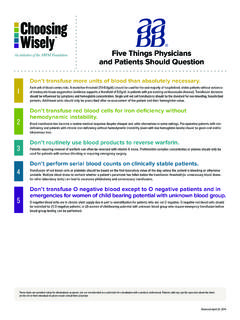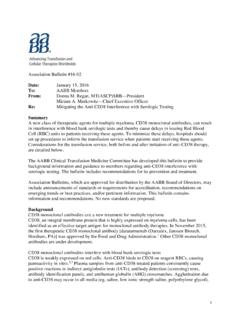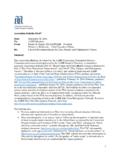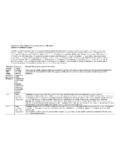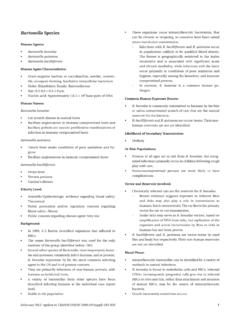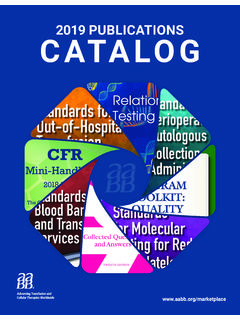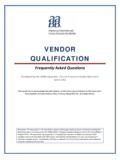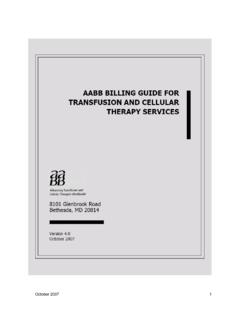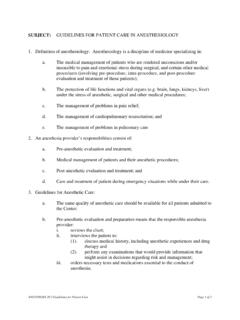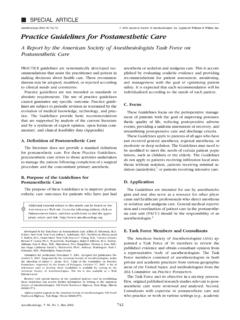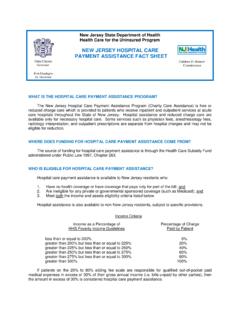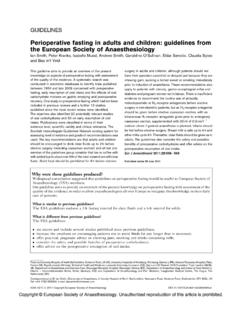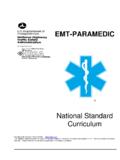Transcription of Evidence based practice guidelines for plasma transfusion
1 transfusion practice . Evidence - based practice guidelines for plasma transfusion _2632 John D. Roback, Stephen Caldwell, Jeff Carson, Robertson Davenport, Mary Jo Drew, Anne Eder, Mark Fung, Marilyn Hamilton, John R. Hess, Naomi Luban, Jeremy G. Perkins, Bruce S. Sachais, Aryeh Shander, Toby Silverman, Ed Snyder, Christopher Tormey, John Waters, and Ben Djulbegovic BACKGROUND: There is little systematically derived ABBREVIATIONS: ACCP = American College of Chest Evidence - based guidance to inform plasma transfusion Physicians; CTMC = Clinical transfusion Medicine Committee;. decisions. To address this issue, the AABB commis- EBM = Evidence - based medicine; GRADE = Grading of Recom- sioned the development of clinical practice guidelines to mendations, Assessment, Development, and Evaluation.
2 Help direct appropriate transfusion of plasma . FP24 = plasma frozen within 24 hours after phlebotomy;. STUDY DESIGN AND METHODS: A systematic review PG(s) = practice guideline(s); SR = systematic review. (SR) and meta-analysis of randomized and observa- From the Center for transfusion and Cellular Therapies, Depart- tional studies was performed to quantify known benefits ment of Pathology and Laboratory Medicine, Emory University and harms of plasma transfusion in common clinical School of Medicine, Atlanta, Georgia; GI/Hepatology, University scenarios (see accompanying article). A multidisci- of Virginia, Charlottesville, Virginia; the UMDNJ/Robert Wood plinary guidelines panel then used the SR and the Johnson University Hospital, New Brunswick, New Jersey; the GRADE methodology to develop Evidence - based Blood Bank and transfusion Service, Department of Pathology, plasma transfusion guidelines as well as identify areas University of Michigan Medical School, Ann Arbor, Michigan; the for future investigation.
3 American Red Cross, Pacific Northwest Blood Services Region, RESULTS: based on Evidence ranging primarily from Portland, Oregon; the American Red Cross, Biomedical Services, moderate to very low in quality, the panel developed the National Headquarters, Washington, DC; the Department of following guidelines : 1) The panel suggested that Pathology, Fletcher Allen Health Care and University of Vermont, plasma be transfused to patients requiring massive Burlington, Vermont; Children's Mercy Hospital, Kansas City, transfusion . However, 2) the panel could not recom- Missouri; the Department of Pathology, University of Maryland mend for or against transfusion of plasma at a Medical Center, Baltimore, Maryland; the Children's Hospital plasma : red blood cell ratio of 1:3 or more during National Medical Center, Washington, DC; the Department of massive transfusion , 3) nor could the panel recommend Blood Research, Walter Reed Army Institute of Research, Silver for or against transfusion of plasma to patients under- Spring, Maryland; the Division of transfusion Medicine, Depart- going surgery in the absence of massive transfusion .
4 4) ment of Pathology and Laboratory Medicine, Penn Medicine, The panel suggested that plasma be transfused in University of Pennsylvania, Philadelphia, Pennsylvania; the patients with warfarin therapy related intracranial hem- Department of Anesthesiology, Mt. Sinai School of Medicine, orrhage, 5) but could not recommend for or against Englewood Hospital and Medical Center, Englewood, New transfusion of plasma to reverse warfarin anticoagula- Jersey; the US Food and Drug Administration, Rockville, Mary- tion in patients without intracranial hemorrhage. 6) The land; Laboratory Medicine, Yale-New Haven Hospital, New panel suggested against plasma transfusion for other Haven, Connecticut; the University of Pittsburgh Medical Center, selected groups of patients.
5 Pittsburgh, Pennsylvania; and the Center for Evidence - based CONCLUSION: We have systematically developed Medicine and Health Outcome Research, Clinical Translational Evidence - based guidance to inform plasma transfusion Science Institute, University of South Florida and H. Lee Moffitt decisions in common clinical scenarios. Data from addi- Cancer Center & Research Institute, Tampa, Florida. tional randomized studies will be required to establish Address reprint requests to: John D. Roback, Center for more comprehensive and definitive guidelines for transfusion and Cellular Therapies, Department of Pathology plasma transfusion . and Laboratory Medicine, Emory University School of Medicine, Atlanta, GA 30322; e-mail: Received for publication November 12, 2009; revision received January 22, 2010, and accepted January 23, 2010.
6 Doi: transfusion 2010;50:1227-1239. Volume 50, June 2010 transfusion 1227. ROBACK ET AL. P. lasma transfusion is commonly prescribed for is becoming the worldwide standard for formulating a variety of indications, including to replace Evidence - based clinical ,3. volume and coagulation factors during massive To direct this effort, members of the AABB Clinical transfusion , to prevent further or future bleeding transfusion Medicine Committee (CTMC) first developed in patients undergoing invasive procedures, to reverse six questions reflecting common plasma transfusion prac- warfarin therapy in patients with or without bleeding, and tices.
7 An SR was performed (see accompanying article4), to address isolated coagulation factor abnormalities. and a working group comprising CTMC members along plasma for transfusion is usually termed fresh-frozen with outside experts representing anesthesiology, hema- plasma (FFP, plasma frozen within 8 hours after phle- tology, hepatology, and pediatric professional societies as botomy) in everyday use as well as in the literature, well as the military (see Materials and Methods) analyzed although many plasma units transfused in the United the data from the SR and developed guidance, which is the States are actually frozen within 24 hours after phle- focus of this manuscript.
8 Botomy (FP24). The primary difference between these products is that cryoprecipitate can be manufactured from FFP but not FP24, although FFP and FP24 can be MATERIALS AND METHODS. transfused interchangeably. Thawed plasma (either FFP of Panel composition FP24) stored for up to 5 days before administration is also A committee composed of 17 members was formed to commonly used for transfusion . (For simplicity, the term develop plasma transfusion PGs. Eleven members were plasma is used throughout the text to refer to FFP, FP24, representatives of the AABB CTMC (JR, JC, RD, MJD, AE, or thawed plasma .) The scientific Evidence supporting MF, MH, JRH, BSS, TS, and JW).
9 Six members were chosen many plasma transfusion practices is limited and weak. as subject matter experts to represent other professional The lack of data, and the absence of authoritative inter- organizations: American Association for the Study of Liver pretation of the available data, have led to inconsistencies Diseases (SC), American Academy of Pediatrics (NL), the in plasma transfusion practice and raise questions of United States Army (JGP), American Society of Anesthesi- optimal plasma transfusion strategies to improve patient ology (AS), and American Society of Hematology (ES, CT;. care and maximize resource utilization. shared one vote).
10 Nine of the members were pathologists practice guidelines (PGs) are systematically devel- and/or hematologists, two were anesthesiologists, three oped statements produced to assist practitioners and were internists, two were pediatricians, and one was a patients in their decisions about health care for specific hepatologist. The panel was aided by three consultants clinical Attributes of high-quality PGs who were methodologists: two who performed the SR and include validity, reliability, reproducibility, clinical appli- one who moderated and assisted the panel in their delib- cability, multidisciplinary process, review of Evidence , and erations to develop these PGs (BD).
